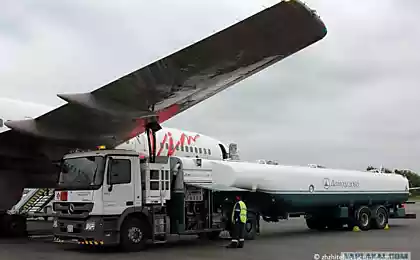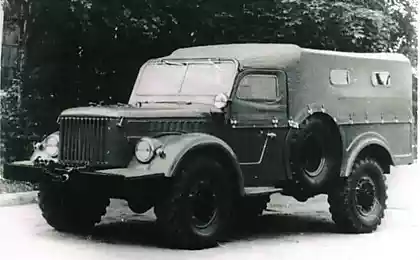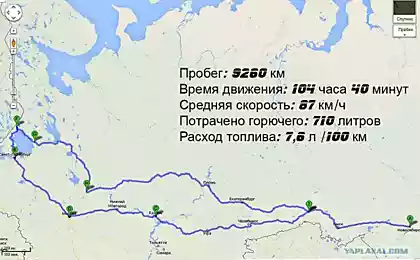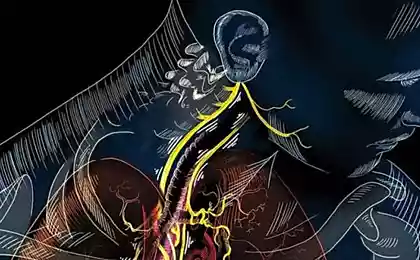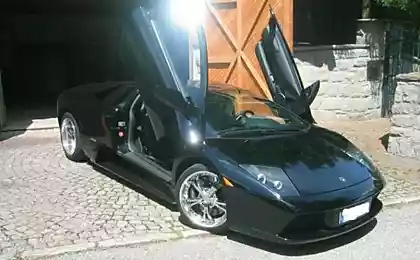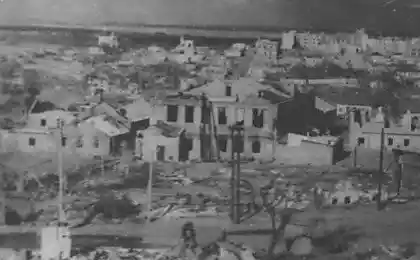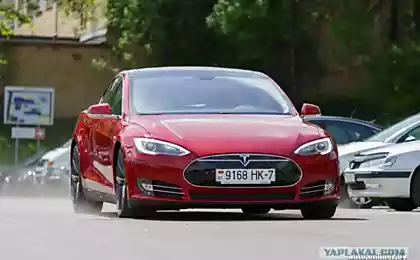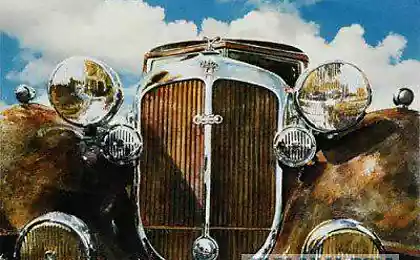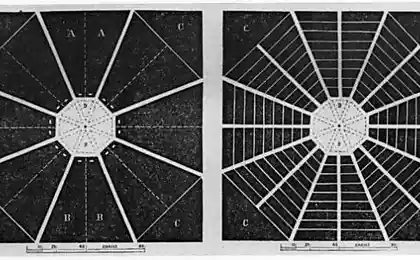556
6 bright ideas that will change the nature of our predvideni in the city
You've probably seen the covers of science fiction books, so I know that the city of the future should look like: gleaming skyscrapers, personal aircraft, soaring over the arcs of pneumatic tubes, all in greenish-grey tones.

But here in the real present – so far, however, no jet aircraft — there are many technologies that will change the ways we move around in urban environments, regardless of whether we drive a vehicle.
Speaking of vehicles
Let's talk about the communication of vehicles with each other, it is called V2V (vehicle-to-vehicle communications). The U.S. Department of transportation recently proposed rules for the standardization of the transfer of the car location information, direction, and speed, warning drivers (and eventually, Autonomous vehicles) about the potential dangers. In the city where accidents happen most often at intersections, the cars themselves will decide whether they have enough time to maneuver, and who is in what order should go further.
Cars talking to traffic lights
The other half of the switching of the communication network is a communication vehicle to infrastructure communication — V2i (Vehicle-to-Infrastructure communication). Fire trucks could use various technologies to change red traffic lights to green along the routes of their movement, but V2i will work more together, listening to vehicle data to make more effective scheme of urban traffic. Smart infrastructure can hold the green light a little longer if the traffic is complicated to change the speed limit, or regulate the traffic on the slippery road to prevent accident to avoid traffic jams, and even redirect traffic around accidents and congestion. When will Autonomous vehicle, it will not only cars that feel and react — the whole city will be a smart machine.
The separation by fuel type
Along with Mexico city, Madrid and Athens, the French capital plans to ban diesel cars travel through large areas of the city to reduce air pollution by 2025, and in cities around the world, most likely, will "pursue the soot". Taking a step forward, in Oslo and Bergen in the two largest cities of Norway – are planning to the same date to create zones with zero emissions, where vehicles with a petrol engine will not be able to have access to. This will allow us to hope that the cars of the future will be smaller, cleaner and much quieter.
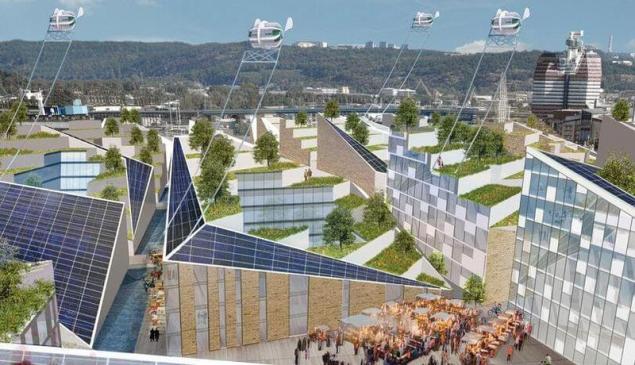
Charging in the background
If everyone in town will ride electric vehicles, needless to say that where once there was Parking (as well as flower pots and outdoor cafe), we will need stations to refuel electric vehicles. In fact, after small changes in the layout of the infrastructure we will be able to charge our cars during a stop at a red light, or just in the Parking lot. Within ten years can be solved the problem of energy transfer at the distance up to 2 meters with performance close to 100 percent. This is called magnetic resonance relationship, and it can use a powered coil in the roadway to create a vibration in the paired coils in the car, which then convert the vibration into electricity to charge the batteries. Urban transport systems around the world have already tested the buses contactless charge while waiting at bus stops, and this technology must be easily integrated into every new garage, as well as in the pavement at intersections. The payment system is being developed.
New fees for driving
The future is here and it's on a paid basis. "Congestion pricing" means that you will pay for travel and use of city streets, affecting the law of supply and demand to other rules of the road. It was implemented in Singapore in 1975, but the city of London to Riga are increasingly using this scheme to reduce traffic. Instead of a tax on fuel drivers will pay a toll for the traveled distance with a higher fee for certain areas at certain points in time. Large vehicles such as limousines and SUVs, would pay more for entry to the center of the city, as a three-axle truck today.
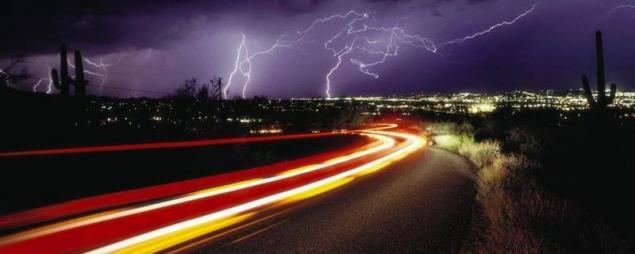
Trip behind the wheel only to the city
The economy of large cities depends on the Park-n-Ride (at our option — Park and ride facilities), in which suburban workforce arrives to the train station, with pay Parking lot on the outskirts of the city on their vehicles, and delivered to Central public transport. While this scheme is ideal for everyday working mode, it is not ideal for short trips or movements outside peak hours when trains run at long intervals. Therefore, some of the city transformerait this idea, and the usual Parking places acquire much greater importance. Truly smart city will allow you to get to any centre or bus stop or station, Bicycle rental (or pneumatic pipes in the future). Although, perhaps that would be even more interesting. published
Source: www.bbc.com/autos/story/20161228-six-bright-ideas-that-are-changing-city-driving

But here in the real present – so far, however, no jet aircraft — there are many technologies that will change the ways we move around in urban environments, regardless of whether we drive a vehicle.
Speaking of vehicles
Let's talk about the communication of vehicles with each other, it is called V2V (vehicle-to-vehicle communications). The U.S. Department of transportation recently proposed rules for the standardization of the transfer of the car location information, direction, and speed, warning drivers (and eventually, Autonomous vehicles) about the potential dangers. In the city where accidents happen most often at intersections, the cars themselves will decide whether they have enough time to maneuver, and who is in what order should go further.
Cars talking to traffic lights
The other half of the switching of the communication network is a communication vehicle to infrastructure communication — V2i (Vehicle-to-Infrastructure communication). Fire trucks could use various technologies to change red traffic lights to green along the routes of their movement, but V2i will work more together, listening to vehicle data to make more effective scheme of urban traffic. Smart infrastructure can hold the green light a little longer if the traffic is complicated to change the speed limit, or regulate the traffic on the slippery road to prevent accident to avoid traffic jams, and even redirect traffic around accidents and congestion. When will Autonomous vehicle, it will not only cars that feel and react — the whole city will be a smart machine.
The separation by fuel type
Along with Mexico city, Madrid and Athens, the French capital plans to ban diesel cars travel through large areas of the city to reduce air pollution by 2025, and in cities around the world, most likely, will "pursue the soot". Taking a step forward, in Oslo and Bergen in the two largest cities of Norway – are planning to the same date to create zones with zero emissions, where vehicles with a petrol engine will not be able to have access to. This will allow us to hope that the cars of the future will be smaller, cleaner and much quieter.

Charging in the background
If everyone in town will ride electric vehicles, needless to say that where once there was Parking (as well as flower pots and outdoor cafe), we will need stations to refuel electric vehicles. In fact, after small changes in the layout of the infrastructure we will be able to charge our cars during a stop at a red light, or just in the Parking lot. Within ten years can be solved the problem of energy transfer at the distance up to 2 meters with performance close to 100 percent. This is called magnetic resonance relationship, and it can use a powered coil in the roadway to create a vibration in the paired coils in the car, which then convert the vibration into electricity to charge the batteries. Urban transport systems around the world have already tested the buses contactless charge while waiting at bus stops, and this technology must be easily integrated into every new garage, as well as in the pavement at intersections. The payment system is being developed.
New fees for driving
The future is here and it's on a paid basis. "Congestion pricing" means that you will pay for travel and use of city streets, affecting the law of supply and demand to other rules of the road. It was implemented in Singapore in 1975, but the city of London to Riga are increasingly using this scheme to reduce traffic. Instead of a tax on fuel drivers will pay a toll for the traveled distance with a higher fee for certain areas at certain points in time. Large vehicles such as limousines and SUVs, would pay more for entry to the center of the city, as a three-axle truck today.

Trip behind the wheel only to the city
The economy of large cities depends on the Park-n-Ride (at our option — Park and ride facilities), in which suburban workforce arrives to the train station, with pay Parking lot on the outskirts of the city on their vehicles, and delivered to Central public transport. While this scheme is ideal for everyday working mode, it is not ideal for short trips or movements outside peak hours when trains run at long intervals. Therefore, some of the city transformerait this idea, and the usual Parking places acquire much greater importance. Truly smart city will allow you to get to any centre or bus stop or station, Bicycle rental (or pneumatic pipes in the future). Although, perhaps that would be even more interesting. published
Source: www.bbc.com/autos/story/20161228-six-bright-ideas-that-are-changing-city-driving
Croatian electric car won in the desert drag racing the Bugatti Veyron
Infiniti will present in 2020 a new electric car




